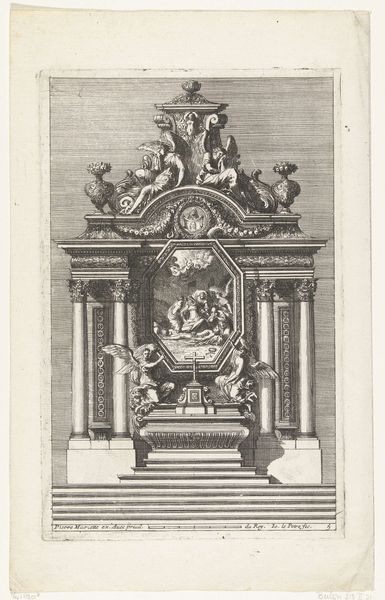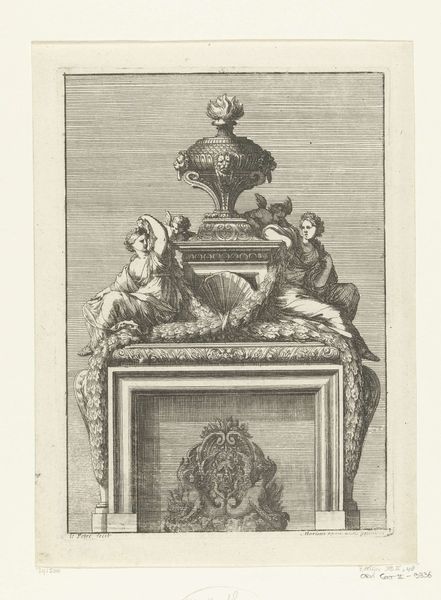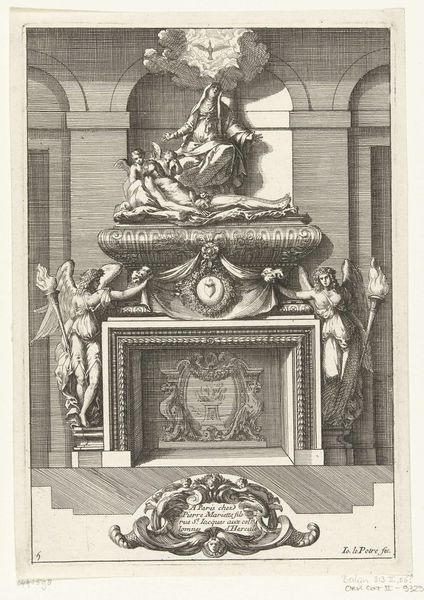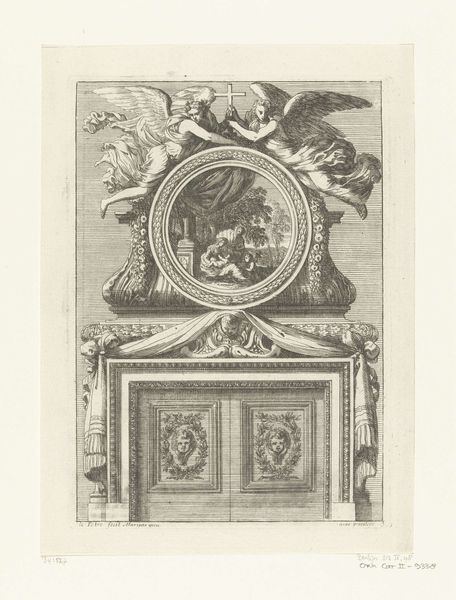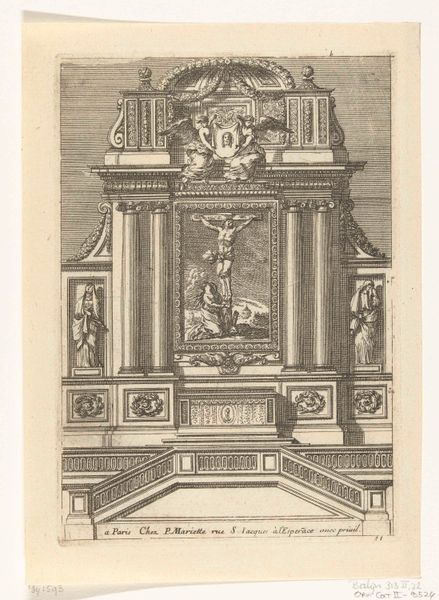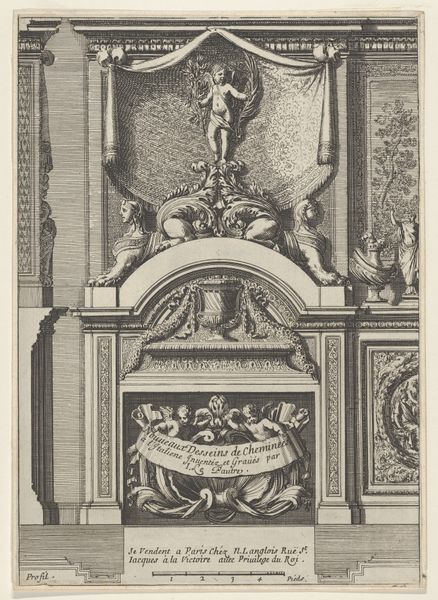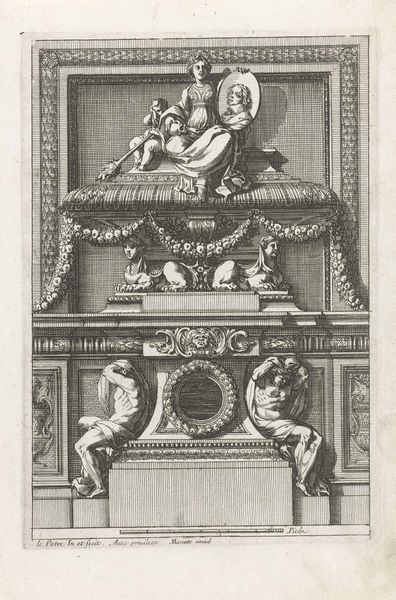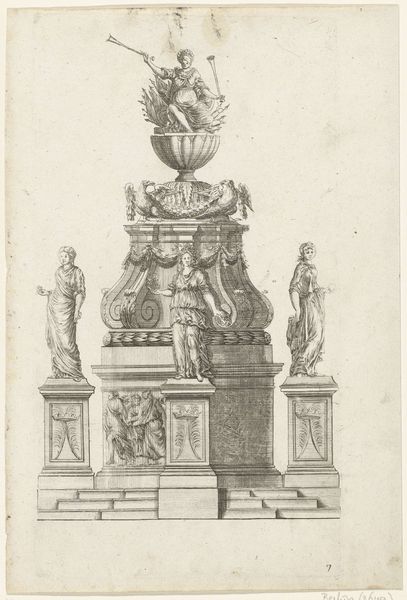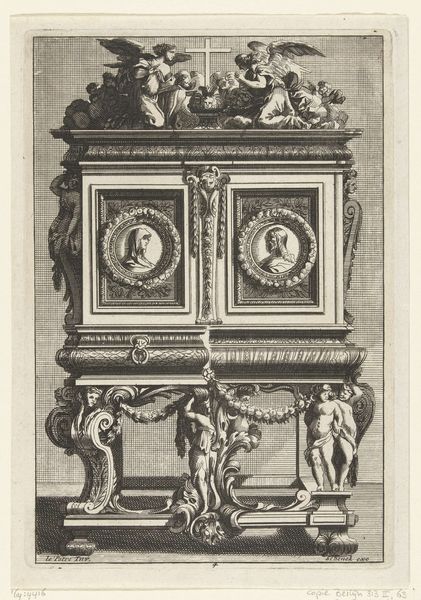
print, sculpture, engraving, architecture
#
baroque
# print
#
form
#
sculpture
#
line
#
engraving
#
architecture
Dimensions: height 215 mm, width 150 mm
Copyright: Rijks Museum: Open Domain
Curator: This print, "Onderboezem," was created around 1661 by Jean Lepautre. Immediately striking, wouldn't you say? Editor: The stark contrast immediately gives a severe tone, almost funereal. The linear precision, achieved by engraving, lends a formal rigidity. Curator: Indeed. But consider Lepautre's broader practice. His engravings were largely disseminated as design ideas, providing templates for artisans and builders. Here, he renders an elaborate fireplace design, indicating trends in luxury consumption and demonstrating artisanal skill. It's less about emotion and more about practical utility for workshops. Editor: I see your point. However, notice how the lines direct our eyes: the cherub at the very top draws you in, then your eye descends slowly downward, observing different sculptural designs. The cherub playing the trumpet in the clouds, the frieze with draped cloth…It speaks to a grand aesthetic intention beyond mere functionality. Curator: The architectural elements themselves also warrant consideration. Look at the precise detailing, especially given the technological and labor constraints of the time. The creation process, replicating such details, underscores the socio-economic context, reflecting societal demand for status symbols. It reminds me that each line pressed embodies material investment and skilled craft. Editor: While I acknowledge the productive aspect and dissemination role of the print itself, can we overlook its refined form? The calculated balance, the proportional distribution of detail across the monument, it generates a certain…harmony. Look at the repetition of circular and draped elements from top to bottom. Curator: "Harmony" suggests aesthetic goals isolated from real-world needs. Consider who benefitted from this kind of elaborate architectural design and production! Lepautre's prints served wealthy patrons wanting to elevate their social position by showcasing elaborate works. So how do we engage critically? Is there any consideration of whose hands made it possible for these wealthy beneficiaries to get exactly what they wanted? Editor: True. I appreciate how you anchor it back to the social elements shaping creation and viewing. It helps deepen a fuller reading beyond just formal appearance. Curator: And that's how art truly functions: a convergence of aesthetics, material labor, and cultural contexts all together in constant dialog.
Comments
No comments
Be the first to comment and join the conversation on the ultimate creative platform.
